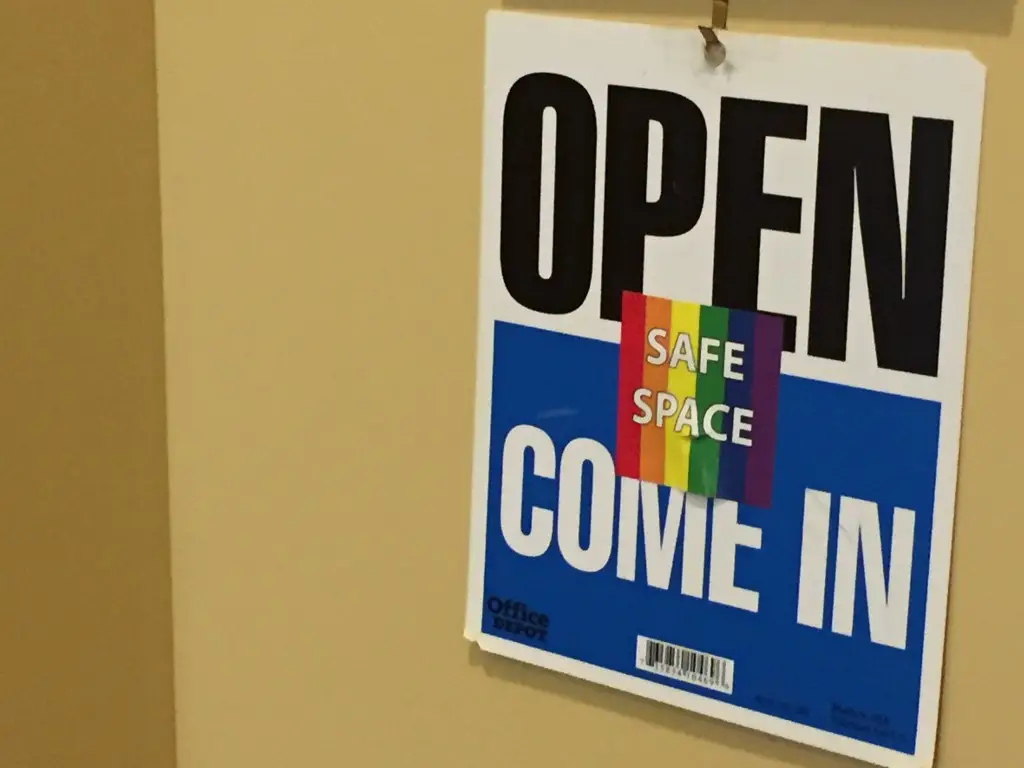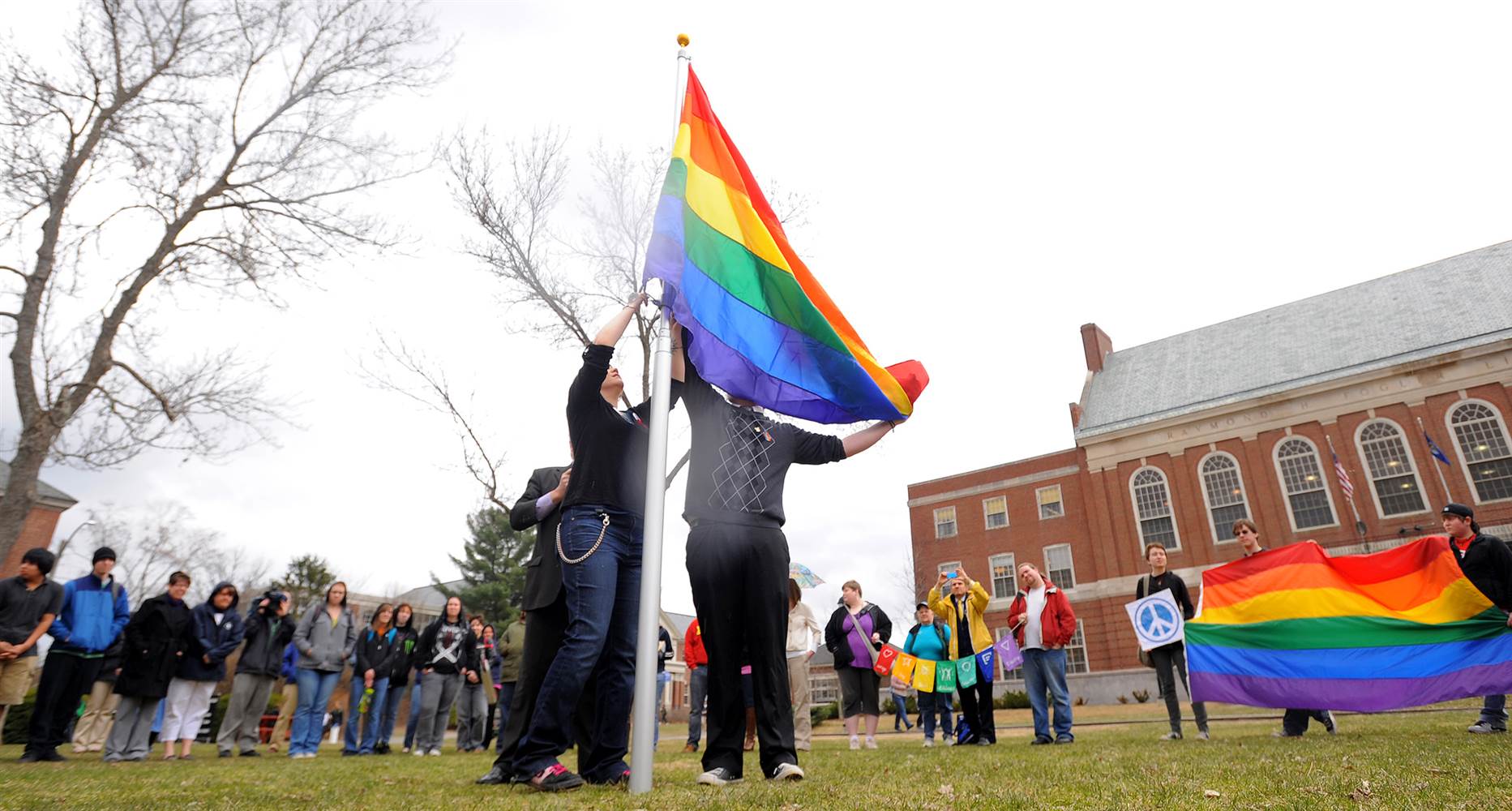When I moved to Northern Utah as a young, queer high school student, I felt like I didn’t belong. If you’ve been here, you know that Utah is a state full of the kindest people in the world, but also the most conservative. We’ve voted Republican consistently since 1965. Teachers throw around Biblical references like everyone in the classroom is expected to identify with the religious culture, and if you don’t—if you’re different—you feel left out.
I understood the references, but still felt the isolation and disconnection of identifying as LGBT in a conservative area. None of my friends were queer; one transgender person total attended my high school, but I didn’t know her and was so ashamed of my gender identity that I never did get to know her. But several months after I moved to Northern Utah, I stumbled across a video called “It Gets Better at Brigham Young University”—a university I now attend—and it made me cry.
BYU is the embodiment of Utahn culture: Spiritual and compassionate, but still exploring how to understand and approach its LGBT residents. On a social scale, our college is quite conservative, and sometimes queer students feel marginalized or even outcast in its culture.
As a young high school student, knowing that a nearby conservative college offered a safe space for LGBT students helped me feel like less of a misfit. Now that I attend BYU, I understand the importance of having a safe place for LGBT students, even (and especially) at conservative universities.
If you attend a conservative university, you may not already have an LGBT support group set up. More liberal colleges take their already-established gay-straight alliances for granted. Starting a university club is tough work, but in this case, you are not just working to create a club. You are creating an alliance between people of all identities who agree to treat each other with respect and compassion.
You are creating a place where any student can feel safe.
You are creating an open dialogue at your university to spread messages of love and support into your community.
In short, you are doing important work. But if your conservative college currently does not have an LGBT student group and you want to change that, where do you begin?
Investigate University Rules
In terms of policy, starting an LGBT student club is like starting any other club. Find out which forms you will need to fill out and what is required to start a club at your university. Check out your university’s website or club department to know what hoops you’ll need to jump through.
If you attend a particularly conservative university, be prepared to explain why you’re making an LGBT student group. Some administrators may be wary if they have misguided judgments about the LGBT community. Be prepared to defend your reasoning and explain why your student community would benefit from the club. Try to understand their perspective, and find a mission statement that fulfills your hopes and eases their questions.
Find a Faculty Advisor
An open-minded professor or staff member can act as a key ally for your club. Not only can they offer administrative support and advice from a mature perspective, a faculty advisor may be necessary to running the club as per university policy.
To find a faculty advisor, ask a professor you know and are comfortable with that you feel would be supportive of LGBT issues. If you do not know of any direct professors, you may either search around or ask a professor you know to be compassionate and tolerant of all people.
Share Information on Available Resources
LGBT students in a conservative university may deal with mental health issues or other troubles related to their identity. Use the LGBT student organization to reach out and connect them with resources that can help them.

Share information at group meetings that connects them to campus resources. A mental health discussion may focus on the university counseling center. If your college has a women or multicultural center, spend a meeting on either to connect residents with potential help. If you know a member is struggling with something campus resources can help ease, help them find professional support.
Inclusion is Key
The LGBT community is known for its acceptance of all people, and because of that, we’re a diverse bunch. Even if you attend a conservative college, you’ll find members who come from many different perspective. Some may be out-and-proud while others may be ashamed of their identity and just starting to come to terms with it. Some may be transferred from a liberal area, and others may have grown up in this area their whole life.
Make this a safe space for all people. You don’t need to do this by ignoring differences in opinion. On the contrary. Embrace the differences and let members know that, so long as they are respectful of others, their opinions are welcome and valid here.
LGBT student organizations are meant to offer inclusion that the greater community may be lacking. Make an effort to include any student who wants to be a part of it.
Keep Audience in Mind
Whether your meetings are light-hearted or serious, make sure that the organization fulfills the needs of the membership. Think about your surrounding culture and how it affects the LGBT population.
If you live in a place where LGBT students are marginalized and shamed, consider talking about self-acceptance and worth. If LGBT residents often stay closeted to avoid social or familial backlash, you may want to talk about self-care or how to stay safe in a harassing situation. Try to choose topics and activities that are relevant to your LGBT community and help them garner feelings of acceptance.
What to Do If Your University Says No
If your university feels uncomfortable or hostile to the idea of an LGBT student organization, don’t lose hope. You may consider several options. First, you can try fighting back. If you feel you were wrongly rejected, consider writing a rebuttal or petitioning for school administration to allow the club. If you explore this option, the more support you have, the better: Show them how much the university wants a gay-straight alliance.

You may also consider organizing a non-university affiliated LGBT student organization. Spread the word among queer friends and peers that you want to organize a weekly or monthly meeting place for LGBT students to meet. This may be a good middle ground for a university that hesitates to approve the group, but has enough queer students to make the organization necessary.
If the above idea is not an option, you may consider looking for support groups in the surrounding community. If on-campus life is too hostile to support a club, invite other LGBT students to attend a non-judgmental place off-campus. While a student-run organization may be ideal, if for whatever reason you cannot create it, a local support group can give peace and a voice to queer students as well as hope that it will, indeed, get better.

















